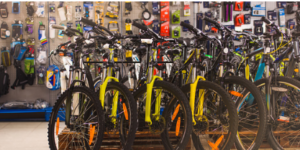When installing solar panels at home, be sure to choose a professional who charges an appropriate price. Companies offering too low of prices may not remain viable over their 25-year lifespan of your system.
Your solar panel installation Adelaide will first assess your roof and electrical box. Any necessary upgrades must be performed for optimal system functionality while also making preparations for local and utility grid interconnection.
Cost
 The cost of solar panel installation Adelaide depends on several variables, including location and energy needs, as well as the type of equipment chosen. Beyond the initial purchase price of the system, you will also need to account for soft costs like permitting inspection taxes and available tax credits or incentives that can offset these expenses.
The cost of solar panel installation Adelaide depends on several variables, including location and energy needs, as well as the type of equipment chosen. Beyond the initial purchase price of the system, you will also need to account for soft costs like permitting inspection taxes and available tax credits or incentives that can offset these expenses.
Solar panel installers typically quote their prices using the cost per watt metric, taking into account system size, equipment options, inverters, battery storage capacity if included and more.
An average residential solar power system produces 11,000 kWh annually, making the initial investment worthwhile. Note that how much solar energy a home has may depend on where you reside, as some states receive more sunlight than others.
Installation time
Sunlight exposure is pivotal in determining how effective solar panels will be, making regions with more sunny hours an excellent candidate for renewable power sources like solar.
Before your installation can begin, a solar company must file for permits with their local government or authority. This process typically takes one week to a month, depending on where your home is and the speed with which their permitting office processes applications.
Once permits are secured, solar panel installation Adelaide technicians will install equipment on your roof. Generally, this step takes one day; more complex systems may take longer.
Energy savings
Solar panel installation may save you money depending on the size, usage, and rates in your area of the system while possibly providing surplus power back into the grid for sale at retail prices. But it would be best if you remembered that a solar system requires ongoing care; be sure to inquire with your supplier about maintenance procedures and warranty coverage before investing in one.
Comparing solar contractors is also wise; be sure to compare quotes, customer reviews and certifications before selecting one. Rebates or incentives might help offset some of the project costs; it is also possible to find contractors offering rebates or other forms of assistance – adding solar panels can be considered an investment, so carefully weigh any benefits against costs before proceeding with installation, saving more could come from energy efficiency improvements like insulation upgrades and window/door upgrades first, saving even more with solar panel installations in future roof renovation projects! You should also note if renovation work is needed on existing houses before opting to add solar panels during construction by roughing in cables before installing walls are finished off – adding solar panels before the drywall goes on can save costs significantly!
Safety
Solar panel installation can be complicated and time-consuming, requiring extensive experience with electrical systems and training. Therefore, it is highly advised that you enlist the services of a licensed electrician for this portion of your project to minimize risks to yourself or the system during installation.
Workers must wear appropriate safety equipment when conducting soldering operations, including eyewear to guard against hot solder splatter, UV rays and particles in the air. Furthermore, comfortable yet durable clothing that does not snag or tear should also be worn; an important aspect is keeping a safe distance from overhead powerlines. In addition, ladders must always be used on solid and stable ground with no obstructions, if possible.
The answer to how much solar panel installation costs depends on a number of factors. Where you live, the type of panels and wattage required to power your home, and local and state incentives can all have an impact on your total solar costs.

 Selling or trading your
Selling or trading your  Pedal-assist mode on an
Pedal-assist mode on an